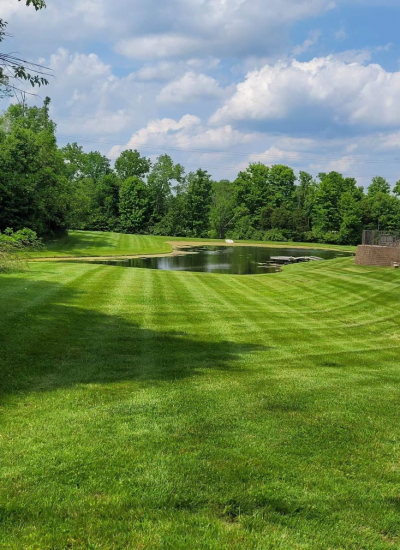The exterior of a business property is not just about aesthetics; it can also serve multiple functional purposes. Well-designed outdoor spaces enhance the overall business environment, providing areas for relaxation, meetings, and social interactions. This blog explores the principles of commercial landscape design, the role of landscape architects, and the benefits of creating functional outdoor spaces for businesses.
The Role of Professional Landscape Architects
Professional landscape architects play a crucial role in designing functional and aesthetically pleasing outdoor spaces for businesses. Their expertise ensures that the landscape meets the specific needs and goals of the business.
Customized Design: Landscape architects work closely with business owners to understand their vision and requirements. They create customized designs that reflect the brand image and operational needs of the business. This includes selecting appropriate plants, materials, and features that enhance functionality and appeal.
Sustainable Practices: Landscape architects incorporate sustainable practices into their designs, such as using native plants, efficient irrigation systems, and eco-friendly materials. These practices ensure that the landscape is not only beautiful but also environmentally responsible and cost-effective to maintain.
Technical Expertise: Professional landscape architects have the technical expertise to address complex landscaping challenges, such as drainage issues, site grading, and integrating hardscape features. Their knowledge ensures that the landscape is both functional and compliant with local regulations.
Creating Functional Outdoor Spaces
Functional outdoor spaces are designed to serve specific purposes while enhancing the overall business environment. Here are some key elements to consider when designing these spaces:
Outdoor Workspaces: Creating outdoor workspaces can boost employee productivity and well-being. These spaces can be equipped with comfortable seating, shade structures, and Wi-Fi connectivity, providing an alternative environment for work and meetings.
Recreational Areas: Recreational areas, such as gardens, walking paths, and seating areas, offer employees and visitors places to relax and unwind. These spaces promote mental well-being and can enhance the overall work environment.
Dining and Social Areas: Designing outdoor dining and social areas encourages social interaction among employees and visitors. These spaces can be used for lunch breaks, company events, and informal gatherings, fostering a sense of community.
Green Spaces: Incorporating green spaces with trees, shrubs, and lawns creates a natural and inviting environment. Green spaces can also help reduce stress, improve air quality, and provide shade, contributing to a more pleasant outdoor experience.
Benefits of Functional Landscape Design
Functional landscape design offers numerous benefits for businesses, extending beyond aesthetics to improve the overall business environment and operations.
Enhanced Employee Well-Being: Access to well-designed outdoor spaces can improve employee morale, productivity, and job satisfaction. Outdoor workspaces and recreational areas provide employees with opportunities to take breaks, enjoy nature, and engage in physical activity.
Attracting Clients and Customers: Attractive and functional outdoor spaces can make a positive impression on clients and customers. A well-maintained landscape reflects the professionalism of the business and creates a welcoming atmosphere for visitors.
Versatility and Usefulness: Functional outdoor spaces add versatility to the business property. They can be used for various purposes, such as outdoor meetings, events, and recreational activities, making the property more valuable and functional.
Sustainable and Cost-Effective: Functional designs often incorporate sustainable practices, which can reduce maintenance costs and environmental impact. Efficient irrigation systems, native plants, and eco-friendly materials contribute to a sustainable and cost-effective landscape.
FAQ
Why is commercial landscape design important for businesses? Commercial landscape design is important because it creates functional outdoor spaces that enhance the business environment, improve employee well-being, and attract clients and customers. Well-designed landscapes also reflect the professionalism of the business.
What are some key elements of functional outdoor spaces? Key elements of functional outdoor spaces include outdoor workspaces, recreational areas, dining and social areas, and green spaces. These elements provide versatile and useful spaces for various activities and enhance the overall business environment.
How do landscape architects contribute to commercial landscape design? Landscape architects contribute by creating customized designs that reflect the business’s vision and needs, incorporating sustainable practices, and addressing technical challenges. Their expertise ensures the landscape is both functional and aesthetically pleasing.
What are the benefits of creating functional outdoor spaces for businesses? The benefits include enhanced employee well-being, attracting clients and customers, adding versatility to the property, and promoting sustainability. Functional outdoor spaces improve the overall business environment and operations.
How can sustainable practices be integrated into commercial landscape design? Sustainable practices can be integrated by using native plants, installing efficient irrigation systems, and incorporating eco-friendly materials. These practices reduce environmental impact and maintenance costs while enhancing the landscape’s appeal.
Designing functional outdoor spaces for businesses is a strategic investment that enhances the overall environment, improves employee well-being, and attracts clients and customers. By working with professional landscape architects and incorporating key elements into the design, businesses can create versatile and inviting outdoor spaces that reflect their brand and meet their operational needs. With a focus on sustainability and functionality, commercial landscape design can transform business properties into vibrant and valuable assets.

